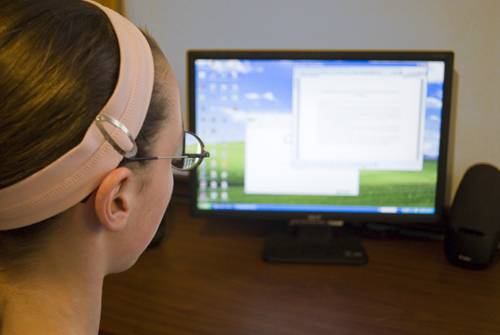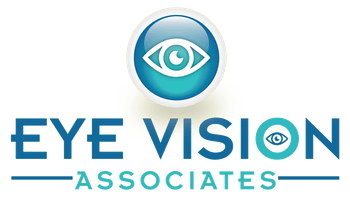
Everywhere you go you see people staring at their handheld electronic devices. Have you ever wondered if this is having an effect on their eyes? These devices, among other things, emit something called “blue light.” The health risks of blue light are a new area of interest. The effects of ultra-violet (UV) light/radiation are what most people are familiar with.
UV radiation is harmful to your skin and your eyes. We know that we can protect the skin with sunblock and the eyes with a UV400 blocker on our glasses. We have recently learned that high energy blue light, which is similar to high-energy UV light, is a new health risk.
But what is Blue light?
All visible light has energy, but the shorter blue wavelengths have more energy. Generally our eyes have the ability to filter out harmful, higher energy wavelengths but those wavelengths that are within our visible spectrum are not filtered and can penetrate into the eye and therefore cause damage. The damage is a photochemical damage at the level of the retina that has been implicated in the development of Age-related Macular Degeneration (AMD). This is one of several potential risk factors for the development of AMD.
In addition to the blue light we get from the sun, we are also exposed to blue light from energy-efficient LED and compact fluorescent lights. Of particular concern-especially for children and teenagers, is that computer monitors, digital tablets and smart phones emit much more blue light than other wavelengths.
It is not all Bad News!
Despite its harmful effects, blue light does have some beneficial effects. It helps to modulate the melatonin production in our bodies. Melatonin regulates our sleeping patterns, thus enhancing attention levels, making us feel more awake and enhancing our moods.
What can I do to protect my Eyes?
In order to protect our eyes from the harmful effects of blue light without losing its beneficial effects, there are lens coatings that can be put onto glasses. These coatings are used on glasses at our Lake Ronkonkoma office and selectively block part of the high energy blue light allowing color transmission and transparency while providing clarity of vision. Certainly, another option is to lessen one’s time around blue light emitting devices, but do we really see that happening?
May sure you
speak to your optometrist at your annual exam about how you should protect your eyes from the effects of blue light.
 Everywhere you go you see people staring at their handheld electronic devices. Have you ever wondered if this is having an effect on their eyes? These devices, among other things, emit something called “blue light.” The health risks of blue light are a new area of interest. The effects of ultra-violet (UV) light/radiation are what most people are familiar with. UV radiation is harmful to your skin and your eyes. We know that we can protect the skin with sunblock and the eyes with a UV400 blocker on our glasses. We have recently learned that high energy blue light, which is similar to high-energy UV light, is a new health risk.
Everywhere you go you see people staring at their handheld electronic devices. Have you ever wondered if this is having an effect on their eyes? These devices, among other things, emit something called “blue light.” The health risks of blue light are a new area of interest. The effects of ultra-violet (UV) light/radiation are what most people are familiar with. UV radiation is harmful to your skin and your eyes. We know that we can protect the skin with sunblock and the eyes with a UV400 blocker on our glasses. We have recently learned that high energy blue light, which is similar to high-energy UV light, is a new health risk.